While modular homes are a great prefabricated home option, they might not be feasible for everyone, or available in all locations. Fortunately, there are many promising alternatives to choose from.
We have selected 11 great alternatives to modular construction that you can select from when deciding how to build your new home.
Each type of housing solution will vary in terms of cost, quality, and duration of the construction process.
To simplify the process, we’ve compiled the best alternatives to modular housing, along with their primary features, so you can select the type of home that best suits your needs.
| Prefabricated? | Permanent Foundations? | Construction Timeline | Construction Cost | |
| Modular Homes | Yes | Yes | Short | Medium |
| Panelized Homes | Yes | Yes | Short | Medium |
| Structural Insulated Panels’ Home (SIP) | Partly | Yes | Short | Medium |
| Manufactured Homes | Yes | No | Short | Low |
| Tiny Homes | Yes / No | No | Short to Medium | Low |
| Kit Homes | Yes / No | Yes | Short to Long | Low |
| Shipping Container Homes | Yes / No | Yes | Short to Medium | Medium |
| Stick Built Homes | No | Yes | Medium | Medium to High |
| Steel Framed Homes | No | Yes | Medium | High |
| Log Homes | No | Yes | Long | High |
| Traditional Brick Building | No | Yes | Long | High |
| Concrete Homes | No | Yes | Long | High |
1. Panelized Prefabricated Homes
Quick Facts:
- Prefabricated
- Built on permanent foundations
- Short construction timeline
- Medium building cost
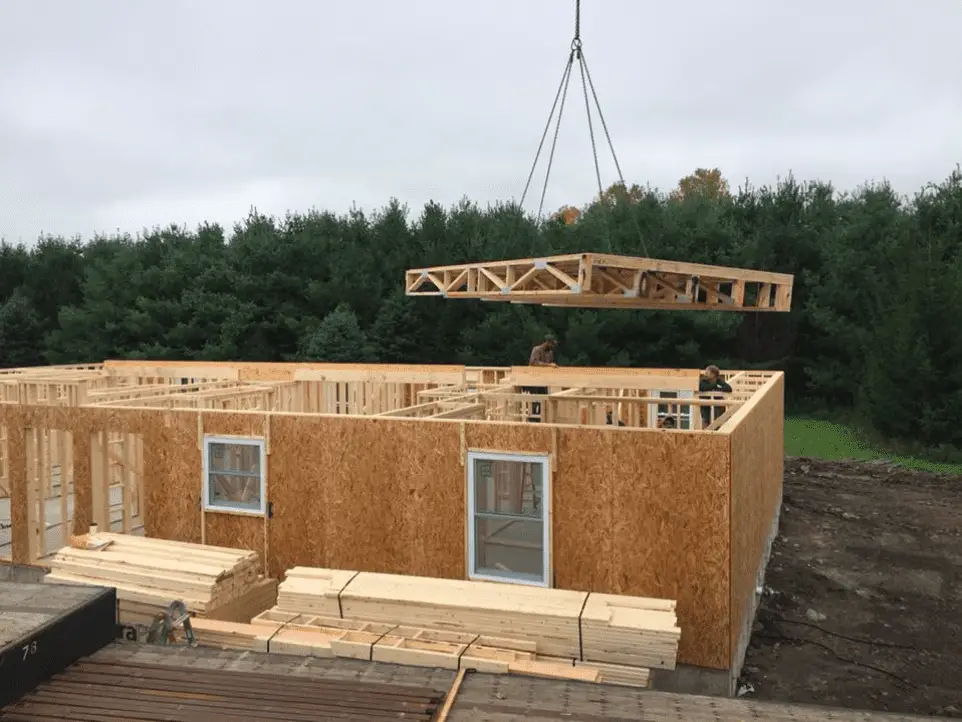
Panelized homes are a housing alternative that most closely resembles modular homes. The construction process also includes off-site building and on-site assembly.
The difference between these two lies in the prefabricated parts. While modular homes are constructed from prefabricated three-dimensional modules, panelized constructions consist of prefabricated two-dimensional panels. Every panel corresponds to either a wall, a roof, or a floor system, and generally includes all the necessary layers, from the exterior siding to the interior finishes, including insulation, doors, wiring, and plumbing.
Given the similarities in the building process of modular and panelized systems, the construction timeline and cost tend to be roughly the same. Choosing panelized construction over modular usually comes down to the availability of manufacturers around you and the products they offer.
2. Structural Insulated Panels (SIP)
Quick Facts:
- Part of the construction is prefabricated
- Built on permanent foundations
- Short construction timeline
- Medium to high building cost
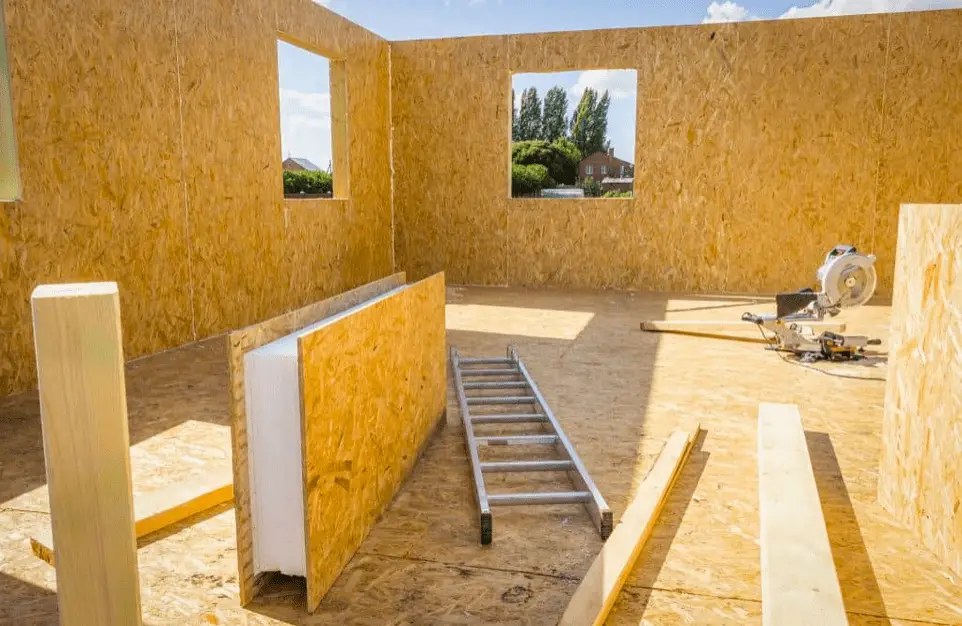
Structural Insulated Panels (SIP) are also prefabricated and have a similar building process as panelized homes. However, SIP is a more specific type of panel consisting of a highly insulated foam sandwiched between two structural facings typically made of an Oriented Strand Board (OSB).
SIP panels are used to form the overall exterior of the house including the walls, roof, and floors. Just like modules and panels, the SIP are prefabricated in a factory-like environment. However, the prefabrication process doesn’t cover as many elements as panelized construction does since doors, windows, or electric wiring are installed once the panels are assembled on site.
3. Manufactured Homes
Quick Facts:
- Prefabricated
- Mobile construction
- Short construction timeline
- Low building cost
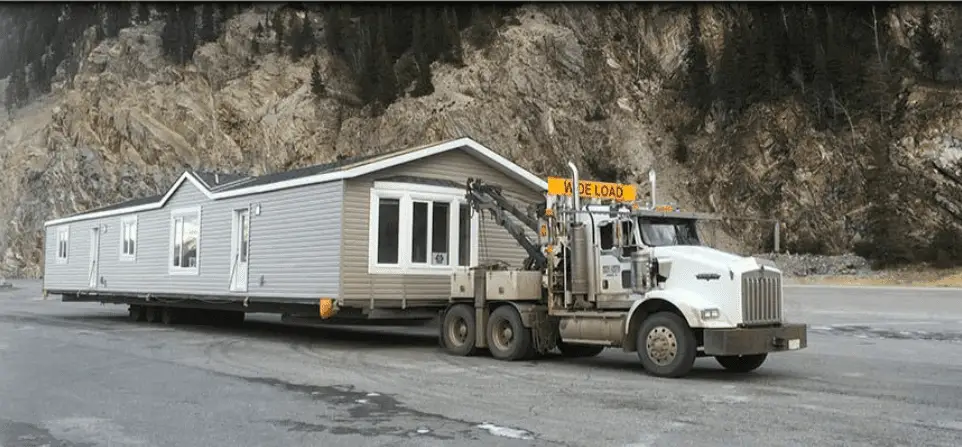
Often mistaken for modular homes, manufactured homes are actually a very different type of housing solution. Considered the ‘updated version’ of a mobile home, these houses are conceived as transportable structures, while modular homes are always permanent. In most cases, manufactured homes are created as one unit that can be easily transported. Once a manufactured home leaves the factory is usually fully furnished and ready to be lived in.
As non-permanent constructions, manufactured homes are considered personal property and are therefore not required to remain on one specific plot of land. Contrary to modular homes, or any other permanent construction, a manufactured home can be placed on rented land or even in a trailer park. It’s important to note that manufactured homes are rarely regulated by local building codes, and are instead regulated at a national level by the Federal Manufactured Home Construction and Safety Standards, following the HUD Code [1].
4. Tiny Homes
Quick Facts:
- Often prefabricated though not always
- Mobile construction
- Short construction timeline if prefabricated
- Low building cost
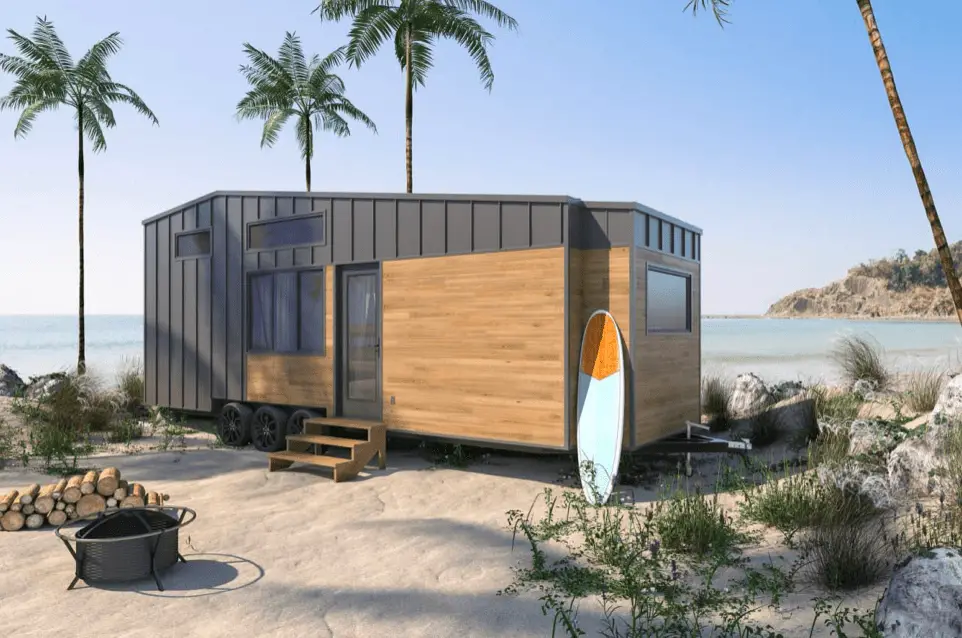
The terms tiny home refers more to a social movement than to a type of construction. Tiny homes are built in a multitude of different ways using a variety of different materials. However, most tiny homes adhere to a similar structure: they are transportable houses built on wheels. Despite being constructed similarly to manufactured homes, tiny homes are built to be transported more easily as manufactured homes usually stay on the same plot for long periods of time.
Tiny homes, as the name suggests, are usually built as small as possible. They should be easily transportable, so their size is typically limited to a maximum of 8.5 feet wide, 30 feet long, and 13.5 feet tall [2]. Most tiny homes are prefabricated but it’s also become popular to build a DIY tiny home. Therefore, the cost and duration of construction depend entirely on the building process.
5. Kit Homes
Quick Facts:
- Part of the construction is prefabricated
- Built on permanent foundations
- Short to long construction timeline
- Low building cost
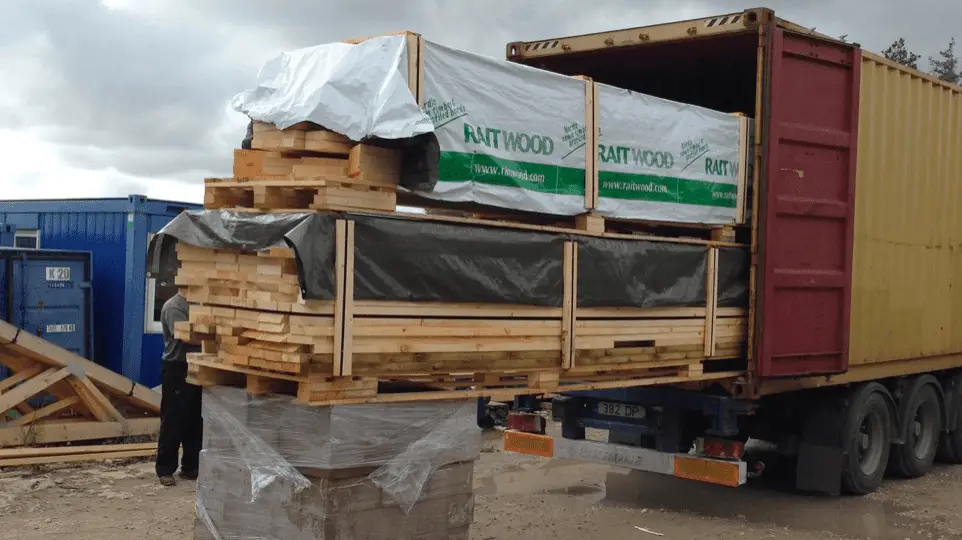
Kit homes are usually thought of as DIY constructions: a manufacturer draws the construction floor plans and prepares all the necessary pieces to build the house so it can be delivered to the building site to begin the construction process. It is common for kit homes to be grouped as prefabricated constructions even though most of their construction works are carried out on-site. The level of prefabrication varies from company to company as some manufacturers deliver the pieces as precut materials and others as complete prefabricated sections.
The construction time of a kit home fluctuates extensively depending on the expertise and the time invested by the builder. Kit homeowners who are experienced builders or who choose to hire a contractor to manage the construction works can raise the structure of the house in as little as three days [3]. However, the construction timeline can extend enormously when handled by a non-experienced owner.
6. Shipping Container Homes
Quick Facts:
- Either prefabricated or built on site
- Built on permanent foundations
- Short to medium construction timeline
- Medium building cost
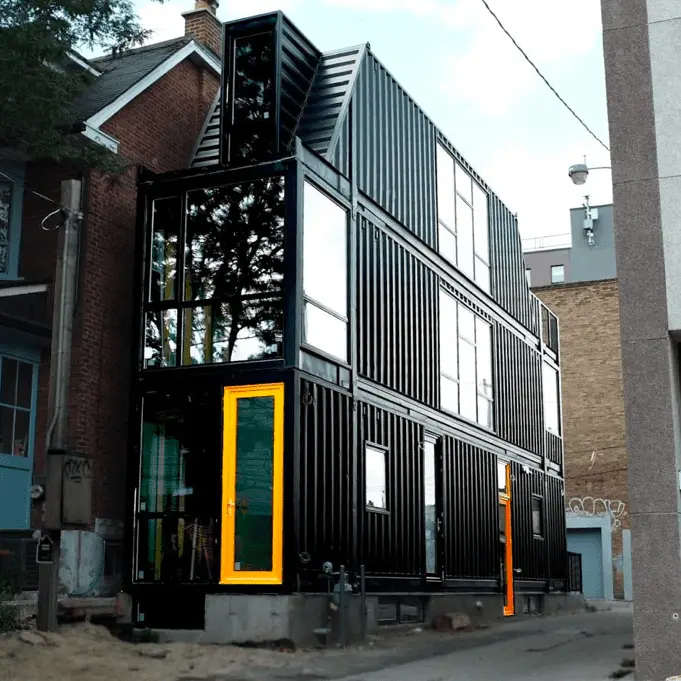
Container homes are built by reusing shipping containers. These houses are usually a combination of two or more containers that results in a kind of modular home. To create different spaces and designs, the sides of the containers can be removed eliminating the potentially boxy or limited feeling
The structure of a container home is already integrated into the same container, though this is all that’s offered by the shipping container, to obtain a home construction works need to be done. Building with shipping containers doesn’t define the building process and every company will work differently. Some companies will deliver the raw containers to the building site, assemble them, and start the construction works. Other companies carry all the construction works in a factory-like environment and deliver the finished containers to the side to be assembled.
7. Stick-Built Homes
Quick Facts:
- Construction on site
- Built on permanent foundations
- Medium construction timeline
- Medium to high building cost
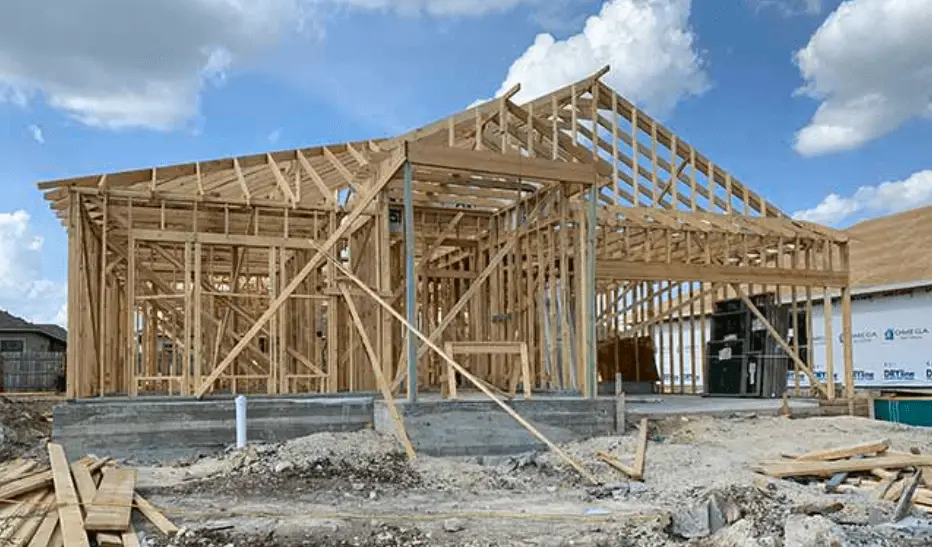
The most common on-site built homes in the U.S. are stick-built or wood-framed houses. The walls of these houses are raised by creating a light frame resembling a skeleton rather than putting up a solid wall. The overall shape of the house is defined by this frame. Once it’s raised, doors, windows, and drywall can be attached to define the limits and delineate the indoor spaces.
Being built on-site, the construction process can be easily delayed by weather conditions. However, compared to most other on-site built homes, a stick-built is raised faster since framing allows using very light materials that are easy to install. Framing doesn’t require heavy machinery and can typically be done by hand.
8. Steel Framed Homes
Quick Facts:
- Construction on site
- Built on permanent foundations
- Medium construction timeline
- High building cost
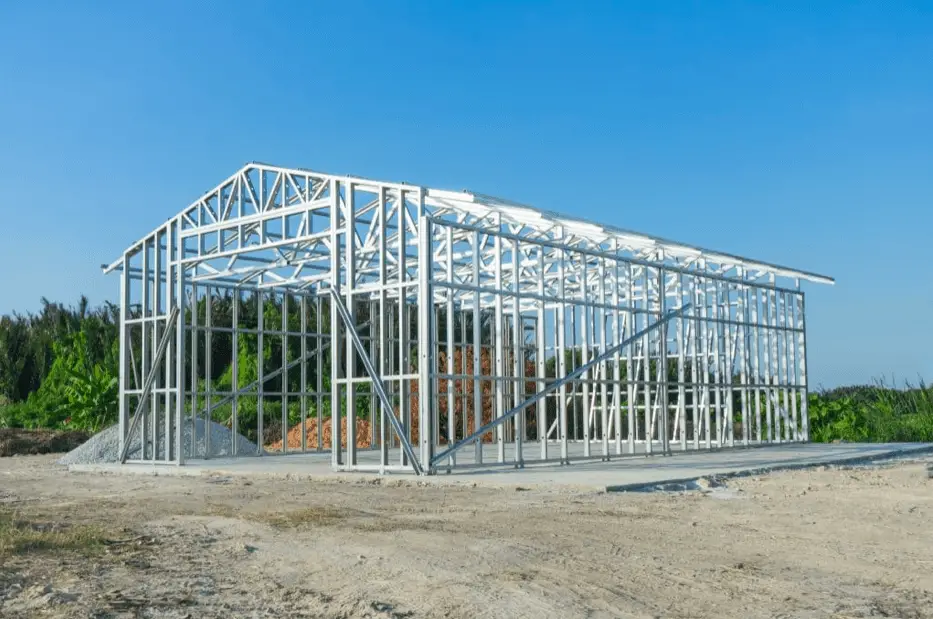
A steel framed homes are is very similar to stick-built constructions. They follow the same building process though instead of building the houses’ skeleton using wooden sticks, they utilize steel I-beams. Using steel improves the durability of the house since steel is resistant to fire, water, and termites. However, the cost of framing a house using steel I-beams is higher than framing it with wood.
Steel is a very strong material that grants the house an outstanding sturdiness as well as flexibility, qualities valued in areas that experience regular earthquakes or hurricanes. The steel beams are manufactured in a factory and delivered to the building site with their exact size and measurements. Once on-site, they are assembled exactly as defined in the architect’s blueprint.
9. Log Homes
Quick Facts:
- Construction on site
- Built on permanent foundations
- Long construction timeline
- High building cost
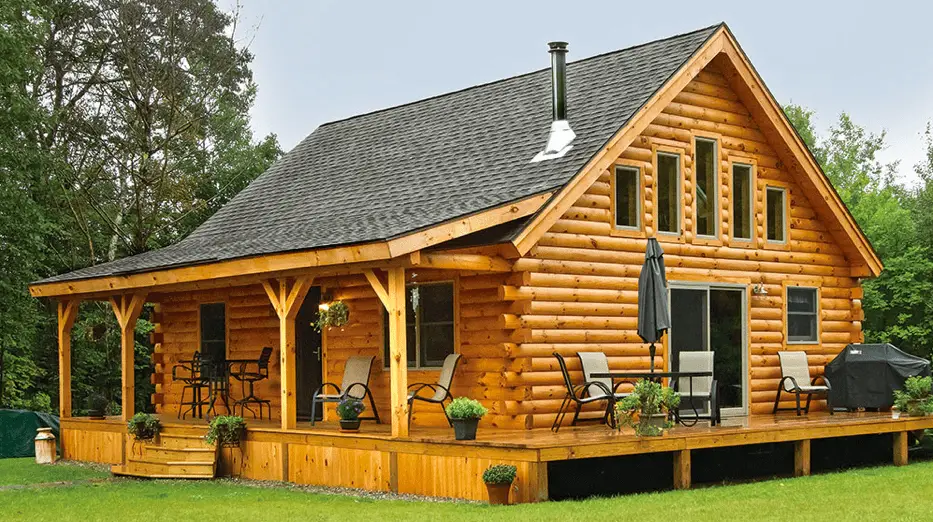
A log home is raised by laying massive wooden logs horizontally which offers a very distinctive, rustic appearance. Building the walls with logs alone does limit the dimensions of the house to the length of the logs. This can reduce the overall size of the house which is why these homes are referred to as ‘cabins’.
Nowadays, the log construction method has evolved to include modern features to make these houses extremely livable and comfortable. These houses are now built with sealed walls, interior insulation, and a finishing wall layer. This type of house is typically built directly on site requiring a good amount of man power to put together.
10. Traditional Brick Building
Quick Facts:
- Construction on site
- Built on permanent foundations
- Long construction timeline
- High building cost
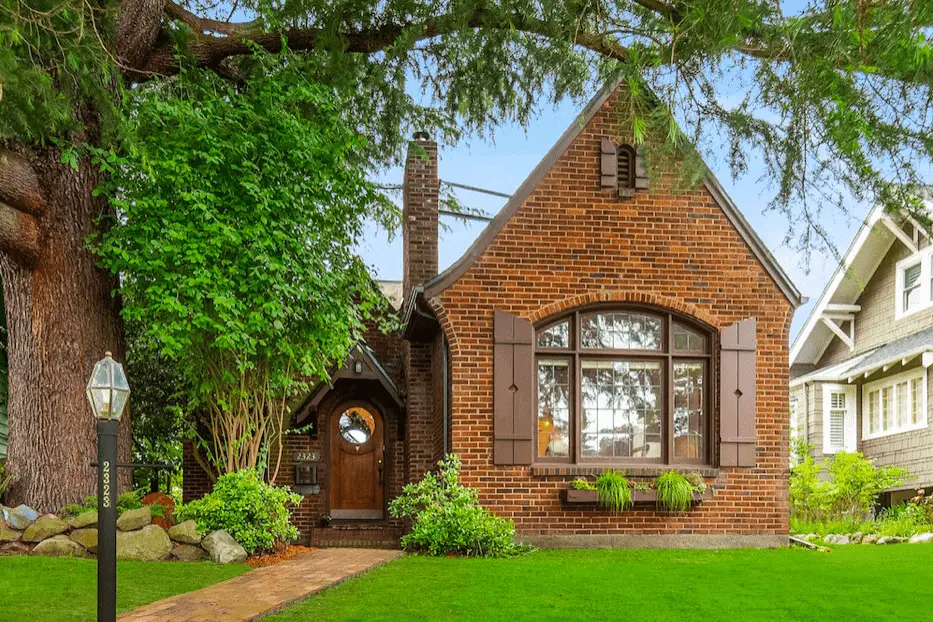
Brick-built homes follow a traditional construction method, known as brick masonry which consists of laying bricks together with mortar to raise walls. These brick walls conform to both the structure and exterior finishes of the house. The brick building method results in high-quality, durable houses with very low maintenance needs.
However, the sturdiness of a traditional brick-built house is achieved with extensive labor. Given that the walls are raised brick by brick, this type of house construction demands a much longer construction timeline than a modular home would.
11. Concrete House
Quick Facts:
- Construction on site
- Built on permanent foundations
- Long construction timeline
- High building cost

Concrete homes are highly durable and sturdy houses built with a, as the name would suggest, concrete structure. A concrete-built home is usually built either with poured concrete or concrete blocks. Poured concrete is almost always secured by steel bars placed in the center to add flexibility and stability. This type of house construction are ideal for areas where earthquakes or hurricanes are common thanks to the horizontal flexibility of its walls.
Although brick and concrete houses are similar in terms of safety and performance, concrete houses are usually covered with an outer layer to mask the less-than-aesthetic concrete blocks. The advantage of concrete blocks over bricks is that, similar to poured concrete, they can be reinforced by adding steel bars for greater durability over time.
References
- (2015, 9 July) What you need to know about the HUD Code Home FirstTM https://homefirstcertified.com/what-you-need-to-know-about-the-hud-code/
- Mitchell, R. (2020, August 13) Tiny House Dimensions: What Size Can a Tiny House Be Without Breaking The Law? The Tiny Lifehttps://thetinylife.com/tiny-house-dimensions-what-size-can-a-tiny-house-be-without-breaking-the-law/
- Frequently Asked Questions Kit Homes https://www.kithomes.net.au/faq
Fig. 1. Harvest Homes Facebook Pages https://www.facebook.com/harvesthomes.ny/photos/2106128872937947
Fig. 2. Bird, P. (2019, January 20) Home Improvement Trends Quick Kit Build Ltd. https://www.quickkitbuild.co.uk/home-improvement-trends-for-2019/
Fig. 3. Manufactured Home Transportation Bridge Central Service/ Towing Ltd. https://www.bridgecentralservice.ca
Fig. 4. Featured Tiny Houses Models Minimaliste Tiny Houses https://minimalistehouses.com/en/
Fig. 5. Pros and Cons of Pre-Cut Homes Katus https://katus.eu/learn/courses/pros-and-cons-of-pre-cut-homes
fig. 6. 6 Most Amazing Shipping Container Homes Container Home Hubhttps://containerhomehub.com/6-most-amazing-shipping-container-homes/
Fig. 7. Waldron, R. (2017, September 28) Stages of Construction Omega Buildershttps://www.omegabuilders.com/blog/stages-of-construction
Fig. 8. Jameson, S. (2019, March 15) Light Gauge Steel Framing Market Predicted $43.65 Billion By 2025 Building Elements https://greenbuildingelements.com/light-gauge-steel-framing-market-predicted-43-65-billion-by-2025/
Fig. 9. Want to Win a Log Home? Log Home Living https://www.loghome.com/articles/want-to-win-a-log-home
Fig. 10. Vacasa (2020, October 7) Eight Architectural Styles For Design-Savvy Travelers Aspire Design and Home Magazine https://aspiremetro.com/eight-architectural-styles/
fig. 11. (2010, January 22) Concrete House in Mar Azul Forest by BAK Architects Contemporisthttps://www.contemporist.com/concrete-house-in-mar-azul-forest-by-bak-architects/



